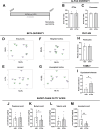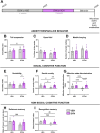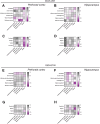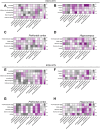Synbiotic intervention reverses alcohol drinking-induced cognitive deficits in adolescent male mice by modulating the microbiota-gut-brain axis
- PMID: 40890900
- PMCID: PMC12407653
- DOI: 10.1080/19490976.2025.2551104
Synbiotic intervention reverses alcohol drinking-induced cognitive deficits in adolescent male mice by modulating the microbiota-gut-brain axis
Abstract
Adolescence is characterized by an increased vulnerability to substance abuse, including alcohol consumption. We investigated the effects of a synbiotic intervention on disruptions of the microbiota-gut-brain axis induced by a drinking in the dark model of intermittent alcohol exposure in adolescent mice. We found that alcohol drinking induced specific shifts in gut microbiota, namely it increased Erysipelotrichaceae and reduced fecal butyric and isovaleric acids. In adulthood, other types of gut bacteria were affected such as Rhodospirillales uncultured family and Entrorhabdus uncultured bacterium. Social and nonsocial cognitive impairments were also observed, and disruptions in prefrontal cortex β-hydroxybutyrate and glutamate metabolic profile in the hippocampus were apparent. Importantly, the synbiotic restored gut microbiota alterations and exerted beneficial effects on alcohol-induced behavioral impairments and brain metabolite changes. In correlational studies, we identified two potential functional networks, one relating gut microbiota (Actinobacteria and Lactobacillaceae)-isovaleric acid with prefrontal glutamate metabolism and sociability, and the other relating SCFAs (propionic, butyric, valeric and isovaleric acids) with β-hydroxybutyrate in the hippocampus and reference memory. These results provide correlative data showing that synbiotic supplementation may restore delayed behavioral alterations induced by voluntary sub-binge alcohol drinking during adolescence through microbiota-gut-brain interactions, and might represent a potential therapeutic tool against long-term alcohol induced behavioral and molecular disturbances.
Keywords: Adolescence; behavior; brain glutamate; gut microbiota; intermittent alcohol drinking; short-chain fatty acids; β-hydroxybutyrate.
Conflict of interest statement
No potential conflict of interest was reported by the author(s).
Figures









References
-
- World Health Organization . World health statistics 2018: monitoring health for the SDGs, sustainable development goals. Geneva: World Health Organization; 2018.
MeSH terms
Substances
LinkOut - more resources
Full Text Sources
Medical
